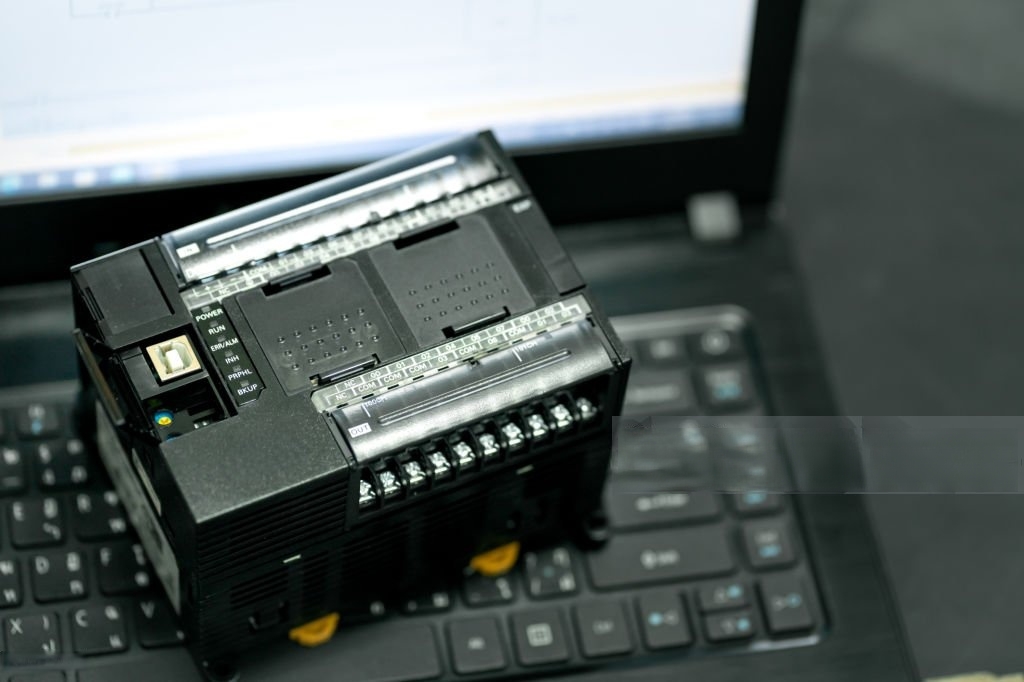
If you’ve ever wondered how factories, power plants, or automated systems run smoothly with minimal human intervention, the answer often lies in a technology called a Programmable Logic Controller (PLC). In this article, we’ll break down what a PLC is, how it works, and why it’s a cornerstone of modern industrial automation.
What is a PLC?
A Programmable Logic Controller (PLC) is a ruggedized, specialized computer designed to control industrial processes and machinery. Unlike your everyday laptop, PLCs are built to withstand harsh environments—think extreme temperatures, dust, and vibrations—while reliably executing tasks like monitoring sensors, controlling motors, or automating assembly lines.
PLCs were invented in the late 1960s by Dick Morley to replace cumbersome relay-based control systems in the automotive industry. Their flexibility, programmability, and reliability quickly made them indispensable across manufacturing, energy, food processing, and more.
Key Components of a PLC
A typical PLC system consists of four core components:
- CPU (Central Processing Unit): The “brain” that processes input data, executes the control program, and triggers outputs.
- Input/Output (I/O) Modules: These interface with sensors (inputs like temperature probes) and actuators (outputs like motors or valves).
- Power Supply: Provides stable voltage to the PLC and its modules.
- Programming Device: A computer or handheld terminal used to write, edit, and upload logic to the PLC.
Modern PLCs also include communication modules (Ethernet, Wi-Fi, etc.) to integrate with networks and IoT systems.
How Does a PLC Work?
PLCs operate in a continuous scan cycle:
- Input Scan: Reads data from connected sensors (e.g., checking if a button is pressed).
- Program Execution: Runs the user-written logic to decide actions (e.g., “If the button is pressed, turn on the motor”).
- Output Scan: Sends signals to actuators (e.g., activating the motor).
This cycle repeats thousands of times per second, ensuring real-time control and rapid response—critical for safety and efficiency in industrial settings.
Where Are PLCs Used?
PLCs are everywhere in automation:
- Manufacturing: Controlling robotic arms, conveyor belts, and quality checks.
- Energy Management: Monitoring power grids or HVAC systems.
- Food & Beverage: Regulating mixers, bottling lines, and packaging.
- Water Treatment: Managing pumps, filters, and chemical dosing.
Their adaptability allows them to scale from small machines to entire production plants.
Advantages Over Traditional Relay Systems
Before PLCs, factories relied on complex networks of relays and timers. PLCs revolutionized automation by offering:
- Flexibility: Reprogram a PLC in hours instead of rewiring relays for weeks.
- Space Efficiency: A single PLC replaces hundreds of relays.
- Diagnostics: Built-in troubleshooting tools reduce downtime.
- Scalability: Easily expand systems with additional I/O modules.
Programming a PLC
PLCs are programmed using languages standardized by IEC 61131-3. The most common include:
- Ladder Logic: Resembles relay wiring diagrams, making it intuitive for electricians.
- Structured Text: A text-based language similar to Python or C.
- Function Block Diagram (FBD): Uses visual blocks to represent functions.
Ladder Logic remains popular due to its simplicity and historical ties to relay systems.
PLCs in the Era of Industry 4.0
Modern PLCs are evolving with advancements like:
- IoT Integration: Connecting to cloud platforms for remote monitoring and predictive maintenance.
- Edge Computing: Processing data locally to reduce latency.
- Cybersecurity: Enhanced protocols to protect critical infrastructure from cyber threats.
These innovations position PLCs as vital tools in the transition to smart factories and Industry 4.0.
Conclusion
From speeding up production lines to ensuring safe drinking water, PLCs are the unsung heroes of automation. Their blend of durability, precision, and adaptability makes them irreplaceable in industries worldwide. As technology advances, PLCs will continue to drive innovation, bridging the gap between physical machinery and digital transformation.
Whether you’re an engineer, student, or tech enthusiast, understanding PLCs opens the door to the fascinating world of industrial automation. Stay tuned for more deep dives into PLC programming, applications, and trends!
Call to Action:
Interested in learning how to program a PLC or explore automation projects? Subscribe to our blog for tutorials, case studies, and industry insights!
By structuring the article this way, readers gain a comprehensive yet accessible overview of PLCs, making it perfect for a blog audience seeking clarity on industrial automation.
